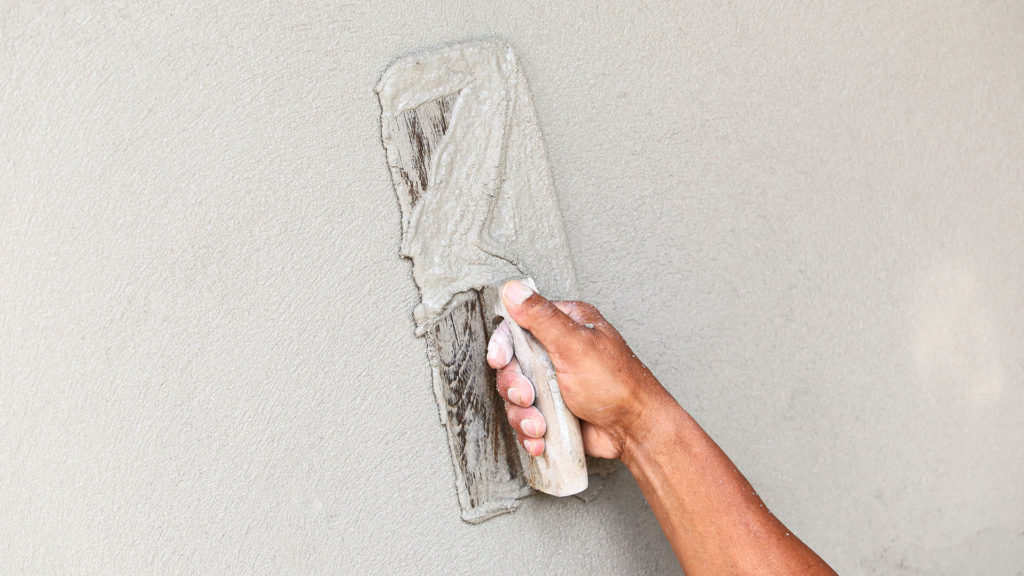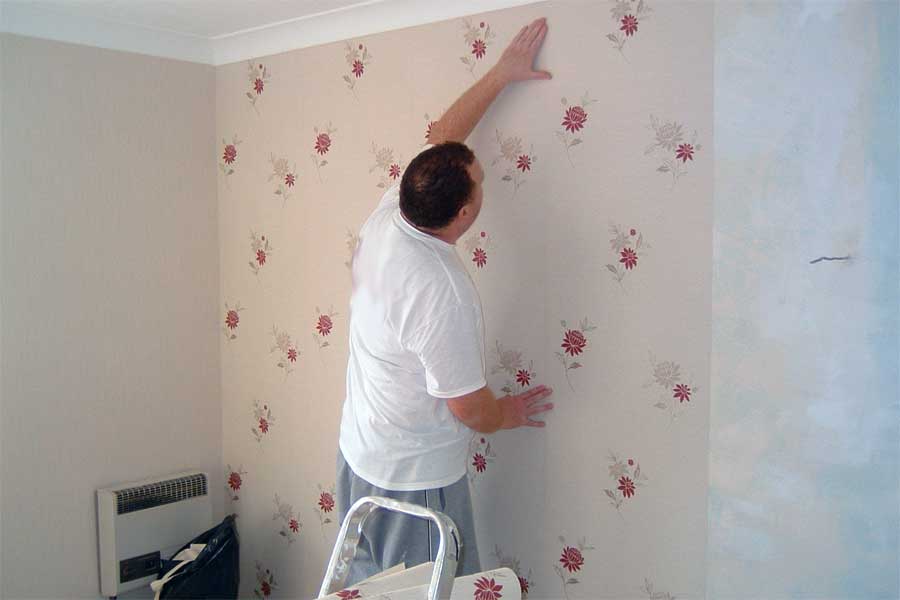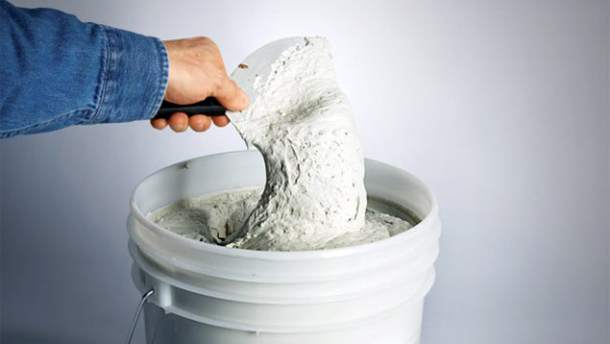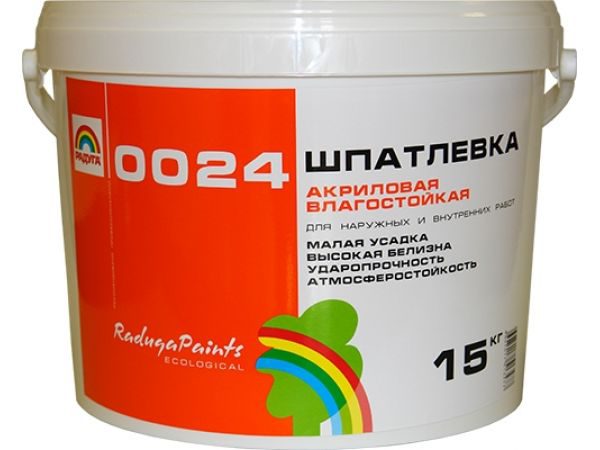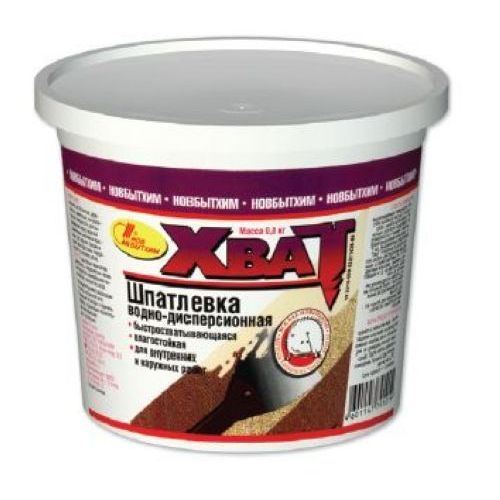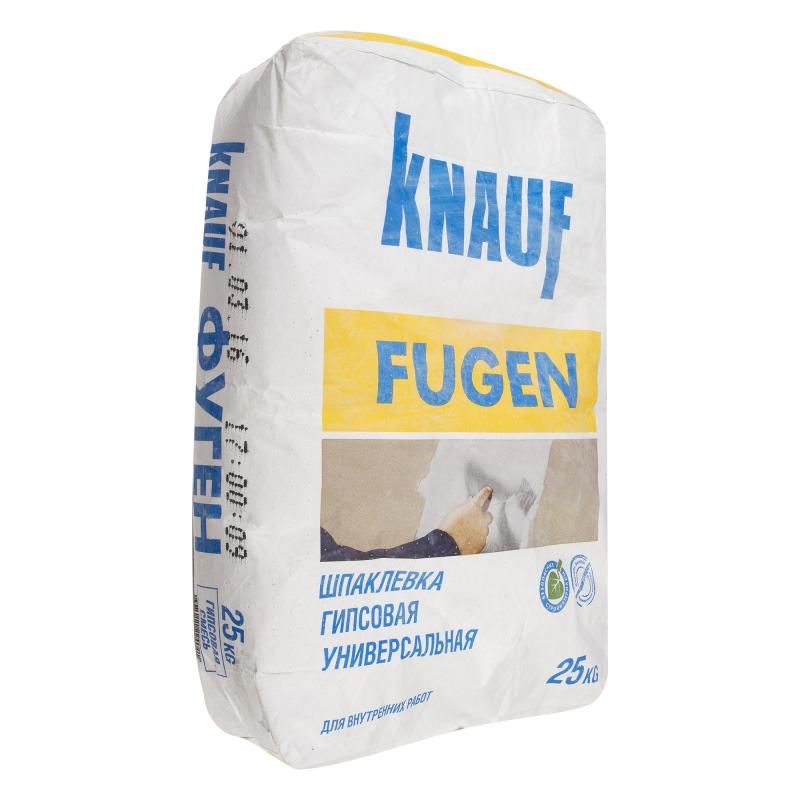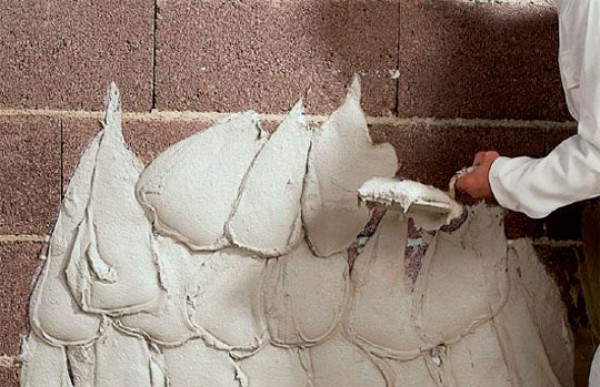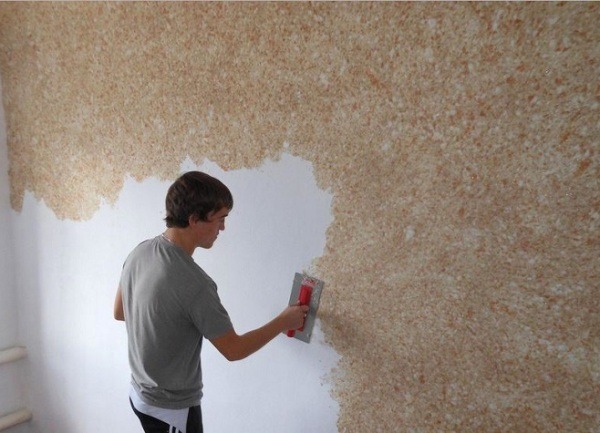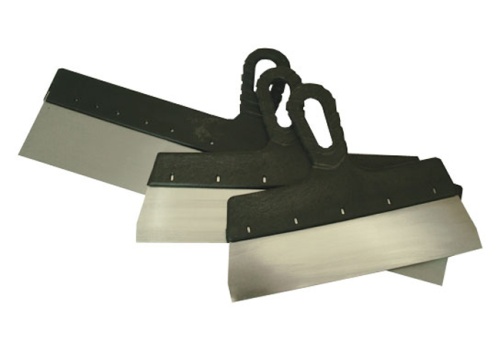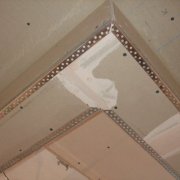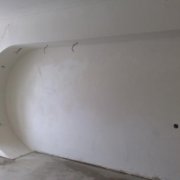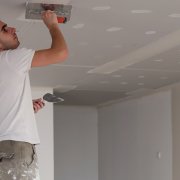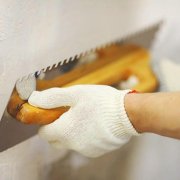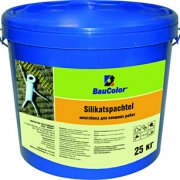Putty for wallpaper
Wallpapering is the application of a decorative coating to the walls. Before carrying out the work, the masters recommend filling the surface to level and hide defects. The main thing is to choose the right tool and apply the material correctly.
The content of the article
Is it possible to stick wallpaper on putty?
Is it possible to glue wallpaper on putty? The instructions for the coating indicate that the material is applied on a flat, clean and dry surface. Putty satisfies the specified requirements, therefore it is possible to glue wallpaper on it, but subject to the conditions:
- for leveling the walls using a tool of one neutral tone, so that after decoration on the material there are no colored spots;
- finishing material is applied to the building base only after the putty has dried;
- after the product hardens, stripping is performed, otherwise, stains from a spatula and other blemishes will be visible on the wallpaper;
- Do not glue the wallpaper on the putty without first priming, since small particles after grinding can cause the finish to lag.
Material selection
How to choose a putty for wallpaper - such a question is often asked by unprofessional finishers before starting repairs. If there is no experience in applying the product, the masters recommend using a ready-made pasty composition. The material is used immediately after opening the container. The product is easy to apply and hides surface defects. The disadvantage is the high price compared to dry mixes. Therefore, if we say which putty is better for wallpaper, then from the point of view of economy - powder material, and for ease of use - a ready-made tool.
Types of putty
There are several types of putty, depending on the composition.
Polymer material
Polymeric agents include acrylic and latex. The second composition has a high cost. This is due to the fact that they use expensive equipment for the production of putty, as well as with a complex composition. Due to the high price, the material is not very popular. The situation is different with acrylic. The product has an affordable cost, therefore, is in high demand. The material is easy to apply and suitable for all types of surfaces. Acrylic putty lends itself to grinding, protects the base from mechanical damage and provides moisture resistance.
Water-dispersed material
This putty under the wallpaper is a pasty mixture. Sold ready-made. The product increases the strength of the base, is well applied and cleaned. After drying, it shrinks.
Gypsum based agent
Gypsum putty under the release in the form of a dry mixture. To prepare the solution for application, the putty is diluted with water according to the instructions and mixed with a construction mixer. The product smoothes the surface and does not shrink, but the product cannot be used in bathtubs, kitchens and other rooms with high humidity, as the material is not resistant to moisture.
Cement composition
This is another material in the form of a dry mixture. The composition is moisture resistant and smooths the surface well, but it shrinks. The product is used for wallpaper, but more often for outdoor work and for finishing the bathroom and kitchen.
Material classification
Putty for wallpaper is classified by the method of use:
- Starter material. It is a tool with large fractions. The product is used as a starting layer for leveling walls.
- The finish tool. It is a material with fractions of small sizes. Putty evens the base and is applied to the surface before wallpapering.
- Universal product. Contains medium sized fractions. The agent is applied as a starting and finishing layer.
When the question arises of which filler to choose for wallpaper, experts advise using universal material. In this case, you do not have to select a starting and finishing tool with the same characteristics.
Putty for liquid wallpaper
Putty for liquid wallpaper is not used if the surface is flat and without major defects. Decorating material to deal with these problems. If there are severe differences or large defects on a building base, then the surface is puttied before applying liquid wallpaper.
Putty preparation
When a repair is done by a layman with his own hands, he needs to familiarize himself with the rules for using the tool. Puttying begins not with the application of the composition, but with the preparation of the surface. Remove old wallpaper or peel off paint. If grease stains are found on the base, remove them. Then dust the dust using a construction vacuum cleaner or a simple brush. Then apply a primer to the wall (as in the photo below). It is recommended to process the surface twice. Do not apply primer layers one after another. After each treatment, take a break to dry the composition.
Materials and Tools
To perform puttying, you will need:
- putty;
- set of spatulas;
- sandpaper P 100 or P 120;
- construction vacuum cleaner or broom;
- a primer;
- brush or roller;
- a clean bucket if a dry mix is used;
- construction mixer or drill with nozzle - mixer for mixing a solution of powder material.
Rules for applying material
How many layers of putty should be applied? To smooth the surface and mask defects, double treatment of the building base is required.
Instructions for the use of putty:
- put the starter or universal material on a wide spatula with a narrow spatula;
- apply the composition to the corners and slopes, moving from top to bottom;
- distribute the product on the walls;
- suspend repairs to allow the material to dry;
- sand the surface with sandpaper P 100 or P 120;
- clean the building base from dust;
- primer the walls in two layers with a break for drying;
- apply the finishing material;
- wait until the composition hardens;
- sand the base;
- Mark the walls and ground;
- Paste the wallpaper.
The video in this article clearly shows how to putty the walls before wallpapering.
